Children were the first to find the traces of one of the largest and most important prehistoric settlements in Poland. It was them that, when the water level in the local lake decreased, they began to bring the remains of earthen vessels to the houses. They boasted about their discoveries to a local teacher - Walenty Szwajcer. Driven by curiosity, he wanted to see the "settlement" that the students talked about. When he saw a row of poles protruding from the lake, he knew he had something of extraordinary scientific importance in front of him ...
Soon after, in 1934, excavations began, which revealed a 2,800-year-old stronghold here, founded on a wet, oval island in Lake Biskupin (now a peninsula) with an area of approximately 2 hectares. The island rose 0.8–1.2 meters above the lake's water. As later research showed - half of the oaks used for the construction were cut down in 748 BCE.
Until now, scientists have managed to establish that the settlement was inhabited for 150 years . There were about 106 houses with dimensions of 8 × 10 meters on average, arranged in rows along 11 streets, each 2.5 meters wide. The stronghold could have been inhabited by 800–1000 people. It was surrounded by a wooden and earth box embankment 640 meters long, 3 meters wide and even 6 meters high, in which the entrance gate was located. Moreover, a breakwater, 2–9 meters wide, was set up diagonally around it.
Arja which is noble
The scale and significance of the discovery made Biskupin famous already in the interwar period. So much that researchers from the Third Reich became interested in the settlement. Soon Biskupin became one of the targets of Nazi "science". It was supposed to be another proof that the lands on the Vistula and the Oder "always" belonged to the Germans, therefore Nazi Germany has the right to them.
The discovery of Biskupin coincided with the swelling in the Third Reich of the racist theory of the origin of the Germans from the ancient Aryan family, which was to reach Asian peoples with its high culture, including Iran and India. In Sanskrit, the word arya means noble. Nazi scientists identified them as perfectly racially pure, white ancestors of the Germans. On this basis, the ideology of the master race was coined, proclaiming the genetic superiority of the Germans and the necessity to submit other nations to them, especially subhumans:Jews, Roma and also Slavs.
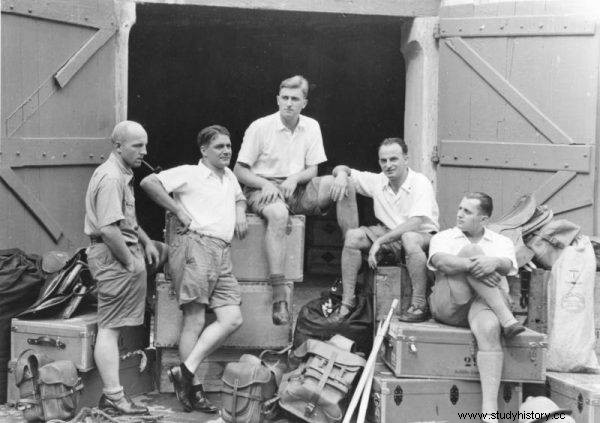
Participants in the Ahnenerbe expedition to Tibet.
In order to provide evidence of the noble origin of the master race, on the initiative of Heinrich Himmler, the Nazi research institute, Ahnenerbe, was even established, whose task was to search for traces of "pro-German" and "Aryan" in the remains of ancient cultures around the world, which would support the thesis about racial supremacy of the Germans.
At the beginning, Ahnenerbe conducted anthropological, linguistic and archaeological research, including in Tibet and Bolivia. During the war, the scope of its activity expanded considerably. Members of the Ahnenerbe who joined the SS supported medical experiments in concentration camps . The cell also dealt with the planned plunder of works of art from conquered countries, including Poland. The official, ideological interpretation of those activities was to "secure" valuable cultural goods that, according to the Nazis, simply belonged to them, because the cultural heritage in Poland was a Germanic, not Slavic, heritage.
Our he ...
An outstanding archaeologist, Józef Kostrzewski, undertook the research of the castle in Biskupin in 1934. The second "brain" of the excavations was his student - Zdzisław Rajewski. The research was carried out using the most modern methods available at that time (including aerial photography, lake depth research with the use of divers, expert opinions in the field of dendrology, palaeozoology, architecture, anthropology, ethnography). They aroused great emotions in the public opinion, although Kostrzewski himself admitted years later that in the initial period, scientists faced not only the limitations of tools, but also a meager budget and Spartan conditions. He recalled:
The conditions of the Biskupin expedition were quite primitive in the first year. We lived in three tents lent to us by the forwarding company C. Hartwig in Poznań, our meals were cooked for us on an open fire by the museum laboratory technician Władysław Maciejewski .
Due to lack of equipment, water from the trench was removed with a manual pump. In the beginning, scientists worked for free. The budget for the first excavations was PLN 140 (nowadays it is just over PLN 1000).
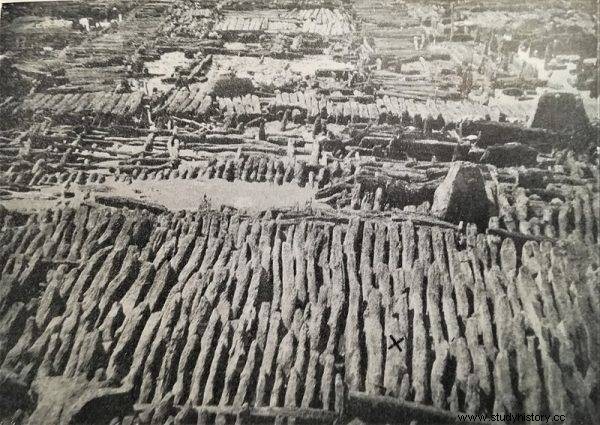
East view of the excavations in Biskupin in the 1930s.
Nevertheless, the scale of the discovery and skilful "marketing" conducted by the researchers soon made the living and financial conditions of the team much better. As early as 1935, enormous funds from the state budget were allocated to research the castle. On the other hand, a steam pump with a capacity of 1,200 liters per minute - supplied by the Road Administration in Bydgoszcz - significantly accelerated the drying of the area. Kostrzewski recalled:
Working on an excavation site became so popular that Rajewski had to send back many volunteers [...]. He also wanted to take advantage of the situation and save on labor. [...] He lowered the daily wage from 2.5 zlotys to 2 zlotys. […] A strike committee was formed and on a sunny day a sit-in strike was announced. It looked like the entire expedition, including the lab technicians, was digging and 100 workers were lying on the grass and basking in the sun. In the afternoon, Rajewski lowered his tone and after brief negotiations with the strike committee, everything returned to normal.
By 1939, a large part of the settlement had been reconstructed. The first archaeological exhibition was also organized. There are two viewing platforms for visitors. And there were more and more tourists. In the first period of its existence, the exhibition was visited by 400,000 people.
No wonder that the Second Polish Republic poured pennies on research and reconstruction. Biskupin satisfied an extremely important need in the national memory and historical policy of a state that regained independence only several years earlier. The stronghold was called "Polish Pompeii" and was hailed as a proto-Slavic settlement. Professor Kostrzewski himself, who was the creator of the autochthonous theory of the origin of the Slavs, considered it to be so. He believed that the Pre-Slavs lived in today's Poland as early as the Bronze Age, and the community from which individual linguistic and cultural factions had only emerged lasted 2,000 years.
In the public consciousness, Biskupin has become a symbol and proof of the presence of Poles' ancestors in these lands "from time to time". Thus, the ideologized views of German scientists who proclaimed the eternal "Germanic" nature of the lands between the Oder and the Vistula were fought off. They served to justify German claims against Poland regarding the western territories of the Second Polish Republic.
A clearly planned town on the island, surrounded by a wooden and earth embankment, with a watchtower and "streets" of the same width between the rows of houses, belied the slanderous Nazi propaganda that the Slavs were unable to leave behind anything of value. Prof. Anna Wolf-Powęska, a historian of ideas from the University of Poznań, wrote:
Nazi Germany's anti-slavism was based on images of Poland, grounded mainly in school textbooks, , as a country "inhabited by half-Asians, with scruffy food for food and for housing burrows " . Poor peoples did not deserve attention. Therefore, knowledge about Poland was negligible.
SS scientists
Before the war, Professor Kostrzewski strongly argued with German researchers. As soon as September 1939 came, his views turned out to be deadly for him.
Already on September 4, 1939, Ahnenerbe asked Himmler for permission to secure works of art and other artifacts - including archaeological ones - stolen in Poland. A list of monuments to be taken over has been compiled. A special SS cell was headed by Peter Paulsen, professor of prehistory at the University of Berlin.
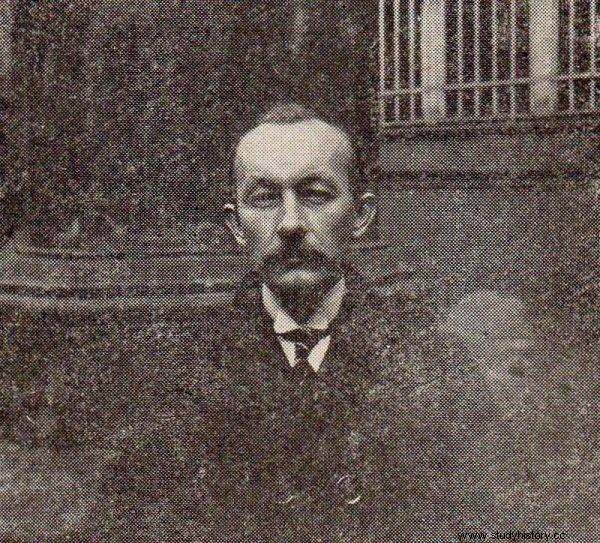
Before the war, Professor Kostrzewski strongly argued with German researchers.
Kostrzewski was aware of the danger. The explorer of Biskupin was wanted by the Gestapo from the first days of the war. Using a forged identity card, he escaped from Poznań to the General Government. He managed to survive the war in Burzyna near Tuchów in the Tarnów poviat. The lawyer Stanisław Jerzy Hofmokl hid him in his estate.
Illyrians in Urstätt
In 1940, the Germans began their own research in Biskupin. For this purpose, even a special SS unit was established - Ausgrabung Urstätt (Urstätt, or Pramiasto). The excavations led by Sturmbannführer SS Hans Schleif were to prove that the neatly planned settlement was not built with Slavic but Germanic (Aryan) hands however, after three years, the work was stopped. To this day, it is not clear why. It has been assumed that the occupier simply did not find what he was looking for. The Germans buried the excavations, which paradoxically helped them survive the turmoil of war.
The Nazi scientists - although they could not find evidence of Urstätt's Teutonic origin - adjusted their results to the propaganda interpretation anyway. They could not conclude that Biskupin was Germanic, but they were also not allowed under any circumstances to suggest that he might have been Slavic. They should, after all, emphasize the age-old prag-German power.
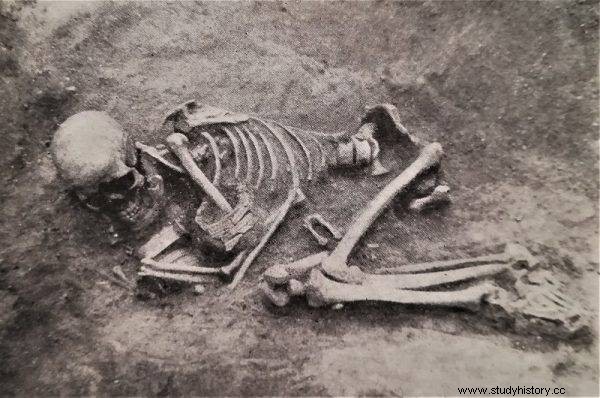
Female skeleton grave from Biskupin
From this puzzle arose a narrative according to which Biskupin was erected by an ancient Illyrian community who came from the south, however, around 500 B.C. the Germans advancing from the west took the heavily fortified city by storm, thus ending the reign of the Illyrians in these lands.
The Slavs of history were "gummed up". It's cute, isn't it? So what nonsense. The Germanic tribes - Goths and Vandals - yes, they lived for several centuries between the Vistula and the Oder, but at the earliest from the beginning of our era, hundreds of years after the settlement in Biskupin ceased to exist.
Our people were (however) here?
Józef Kostrzewski returned to the university after the war. In 1952 he became a member of the Polish Academy of Sciences. Until his death, he insisted on the view that the pre-Slavs had built the Biskupin settlement. And in the times of the People's Republic of Poland, this view was maintained for a long time.
The question of whether Biskupin was built by the ancestors of the Slavs is part of the fundamental dispute about where our ancestors actually came from. Were they on the Vistula "forever" (as the autochthonists want), or did they come here only in the 5th-6th centuries from the area of today's Belarus and Ukraine and took over the depopulated lands after the Germans left these areas (as the supporters of the allochthonous theory believe)?
It has dominated over the past decades. According to allochtonists , the exchange of population in Polish lands is to be confirmed by, inter alia, the existence of the so-called settlement emptiness , i.e. depopulation of the lands on the Vistula and the Oder after they were abandoned by the Germans and re-populated by people representing a different - poorer - material culture.
The dispute remains unresolved, but recent years have slightly shifted the burden of evidence to the side of the indigenous people. There is no shortage of scientific voices identifying with the Vandals or Western Slavs the people of Weneds mentioned by ancient chroniclers, who lived on the Vistula during the Roman period. The name Wenedowie was commonly used to describe the Slavs also by the Germanic people.
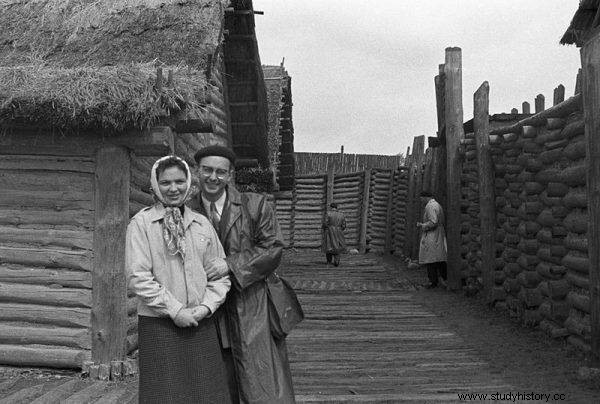
Ethnographers in Biskupin
An important argument was also given by the studies of fossil DNA and haplogroups (allowing to track the migration of the population), as well as the results of analyzes conducted by prof. Janusz Piontek, an anthropologist from the University of Poznań, who studied the morphological features of the skulls and teeth of people living on the Vistula from prehistory to the Middle Ages.
None of the researches by this scientist confirmed that there was a population exchange in the Vistula and Odra basins. Moreover, these works show that the population groups that lived here during the so-called Roman influences (and also earlier - under the Lusatian culture, the creation of which is to be Biskupin), were most similar to the inhabitants of Piast Poland in terms of biological characteristics. The professor stated that:
These populations do not differ from the medieval populations of Western Slavs, while the compared features of the structure of the skull and teeth distinguish them from medieval Germanic groups . The biological similarity of the human populations inhabiting the Odra and Vistula basins from the Bronze Age to the Middle Ages is very high.
In the study "Population of the Lusatian culture and Pomeranian culture and the problem of the origin of the Slavs" by Janusz Piontek and Beata Iwanek, it was stated:"The results of this research, including ours, do not confirm the thesis about the discontinuation of the settlement of areas in the Odra and Vistula basins between antiquity and the early Middle Ages. However, these studies show a high biological similarity between the people living in these lands since ancient times. "
How does all this relate to the fortress in Biskupin? Was it really - as Kostrzewski wanted it - built by the Pre-Slavs? This question cannot be answered for a simple reason:it is not genes or physical or biological features that speak of cultural belonging, and the Slavic language is not a domain of specific racial features, but of a common culture and language. No chronicle records mentioning this settlement have survived, nor are any inscriptions left by its inhabitants. Today, scientists recognize simply that it was the so-called the Lusatian culture, one of the archaeological cultures of the Middle and Young Bronze Age and the early Iron Age in Poland.
The example of this prehistoric settlement proves without a doubt that the political and ideological concepts and concepts developed in modern times have nothing to do with the ambiguous past - and should under no circumstances be applied to it if science is to remain science and not become an ideology .
Bibliography:
- Dariusz Kaliński, Balance of wrongs. What was the German occupation of Poland really like? , Krakow:Znak, 2018.
- Józef Kostrzewski , From my life. Diary, 1970.
- Lech Leciejewicz: Western Slavs. From the history of the formation of medieval Europe . Wrocław-Warsaw:Ossolineum, 1989.
- Dorota Ławecka, Introduction to archeology , Warsaw:PWN, 2009.
- Janusz Piontek, Beata Iwanek; " The population of the Lusatian culture and Pomeranian culture and the problem of the origin of the Slavs ” , Archaeological Museum in Gdańsk 2009.
- Anna Wolff-Powęska, The German problem with oblivion, "Gazeta Wyborcza" 2009.
- Jerzy Strzelczyk , From Proto-Slavs to Poles, series: The history of the Polish nation and state, Krakow 1987.
- Benedict Zientara , Ś wit of the European nations. The emergence of national consciousness in the area of post-Carolingian Europe , Warsaw:State Publishing Institute, 1985.
